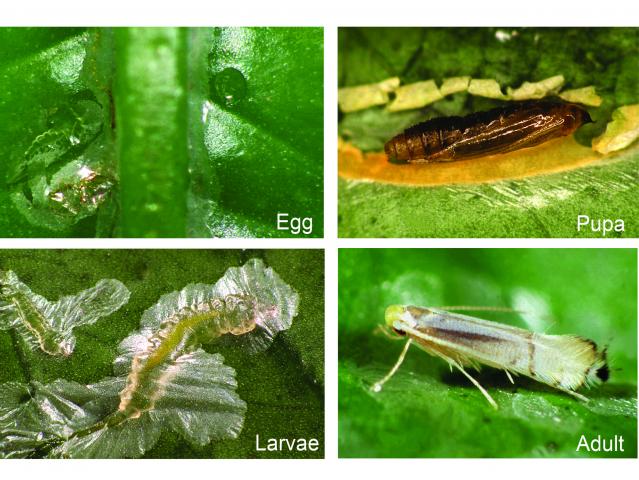Damage
- This insect attacks all citrus varieties.
- Larvae infest the young flushing foliage, producing a snake-like 'mine' as they feed. This causes the leaves to twist and curl.
- Larvae can also attack fruit and stems, though this is rarer.
- Severe infestations can retard growth of young trees. Infestations on older trees (more than five years) can cause unsightly damage, but do not normally cause significant yield losses.
- In Western Australia, attacks are most severe in late autumn peaking in April or May, depending on temperature.
- In spring, damage is minor as the leafminer population is smaller. As a result, only a small proportion of the prolific spring flush is attacked.
Life cycle
- Adults are about 2mm long, silvery-white in colour with wings fringed with long hairs. They are visible and are active in the morning and night.
- Females lay eggs singly under the leaf. Females can lay up to 50 eggs. Newly emerged leaflets (10 – 20mm) are the preferred egg laying site.
- After 2 – 10 days the larvae hatch. There are three larval stages. When they first hatch, larvae are pale-green and difficult to see. As they begin feeding, the larvae excrete their faeces into the mine forming a visible trail.
- Larvae cannot move from leaf to leaf or from lower to upper leaf surface, but remain on the same leaf throughout their life. One o eight larval mines can be found on a single leaf.
- When larvae complete their feeding (5 – 6 days in summer), they mine near the edge of the leaf causing the leaf margin to fold over. The larva moults into the fourth instar or prepupa.
- Pupation occurs in a fold on the edge of the leaf. The pupa remains in the mine until it emerges as an adult. The pupal stage lasts six days.


